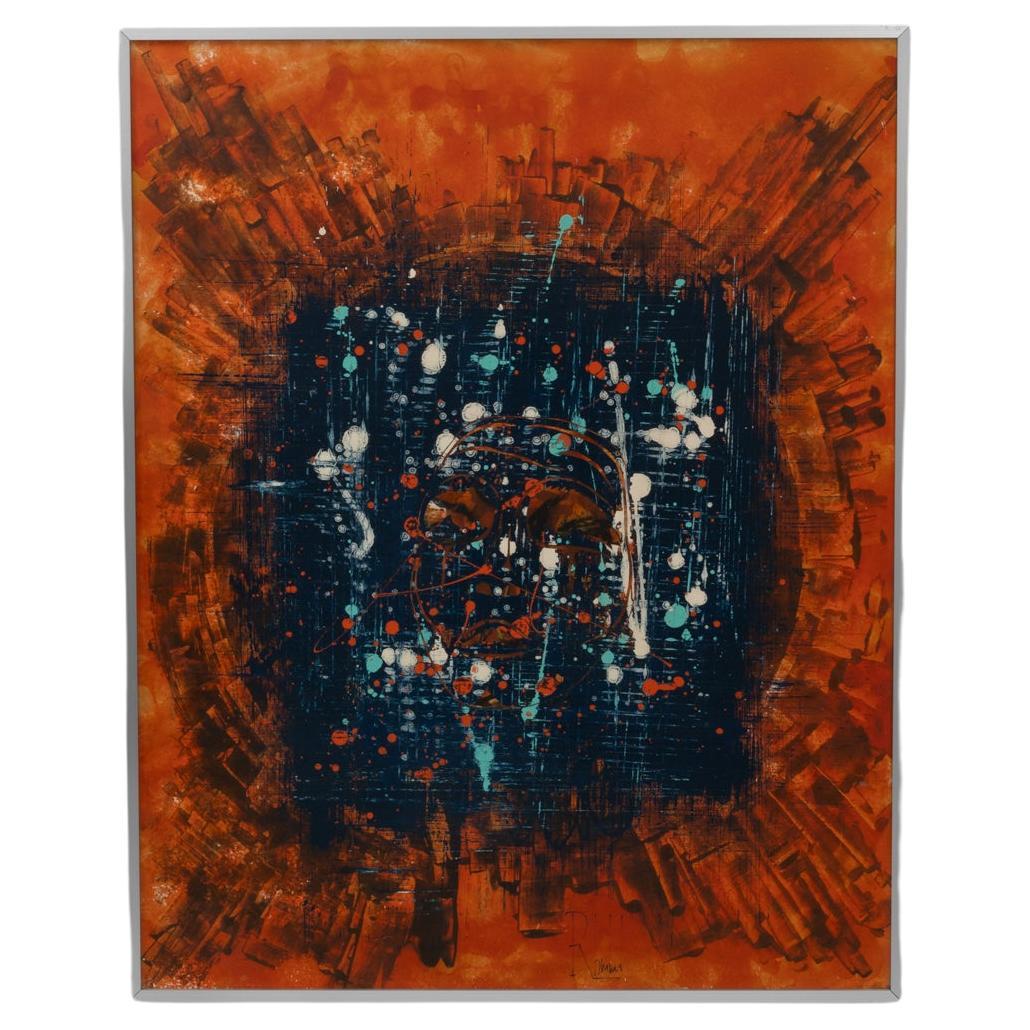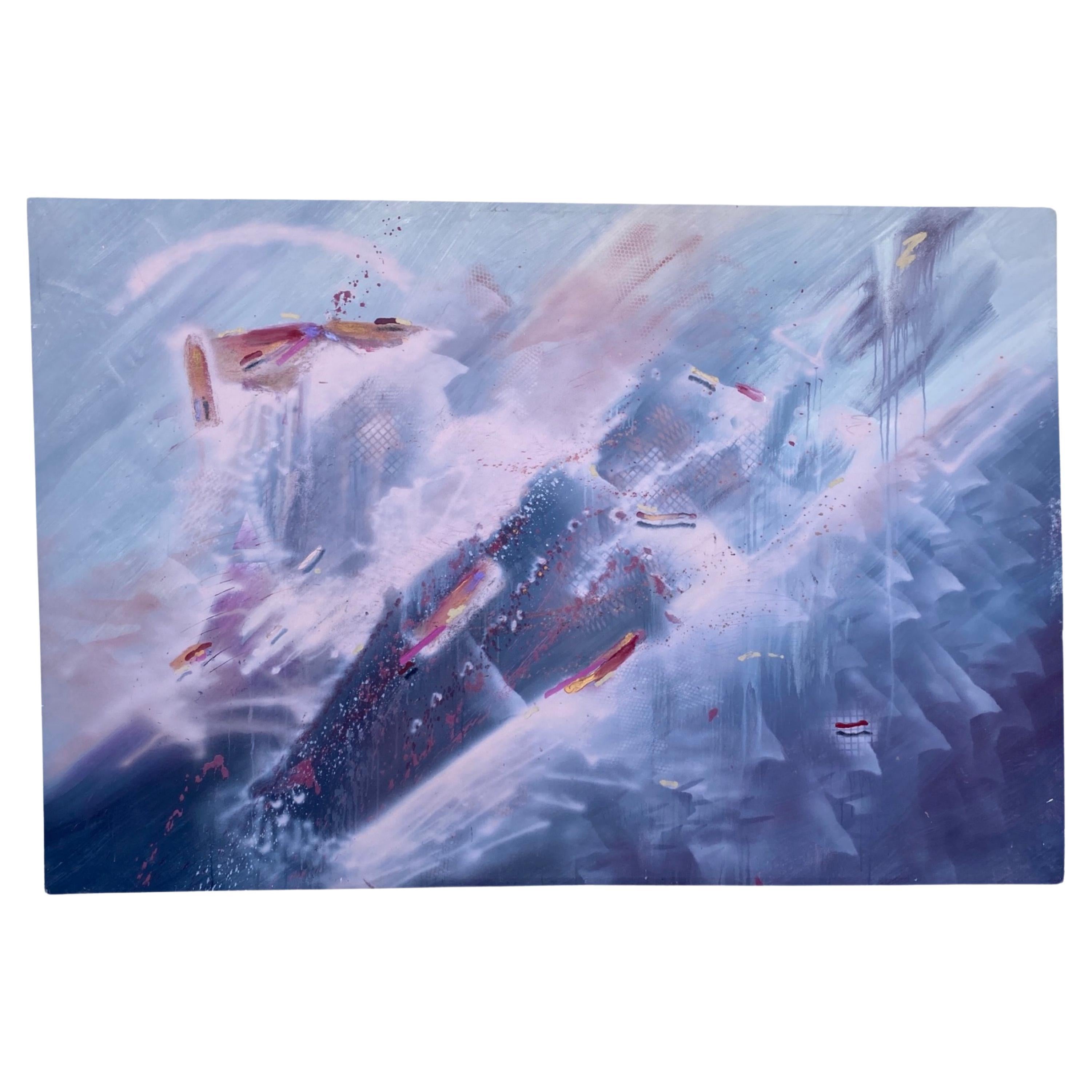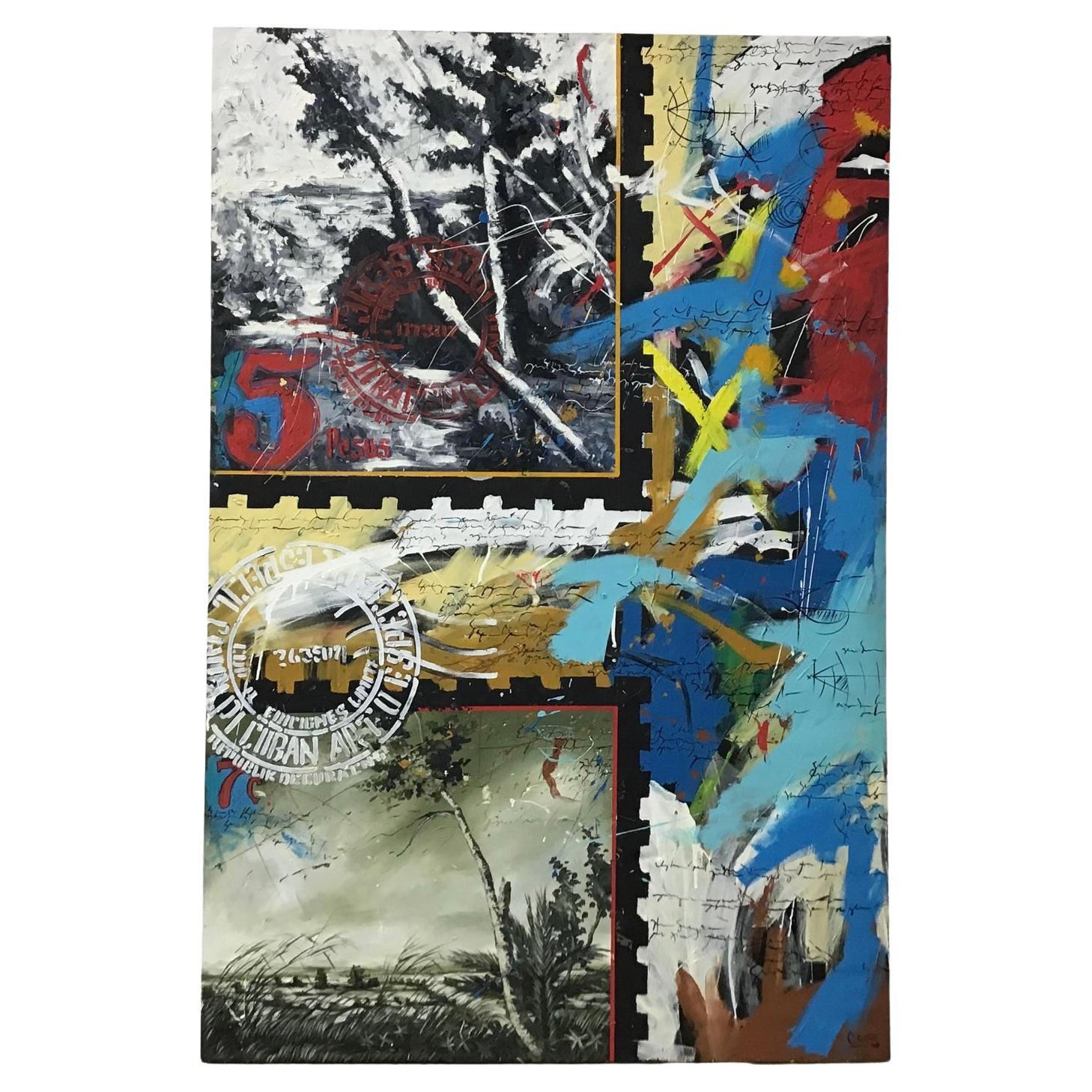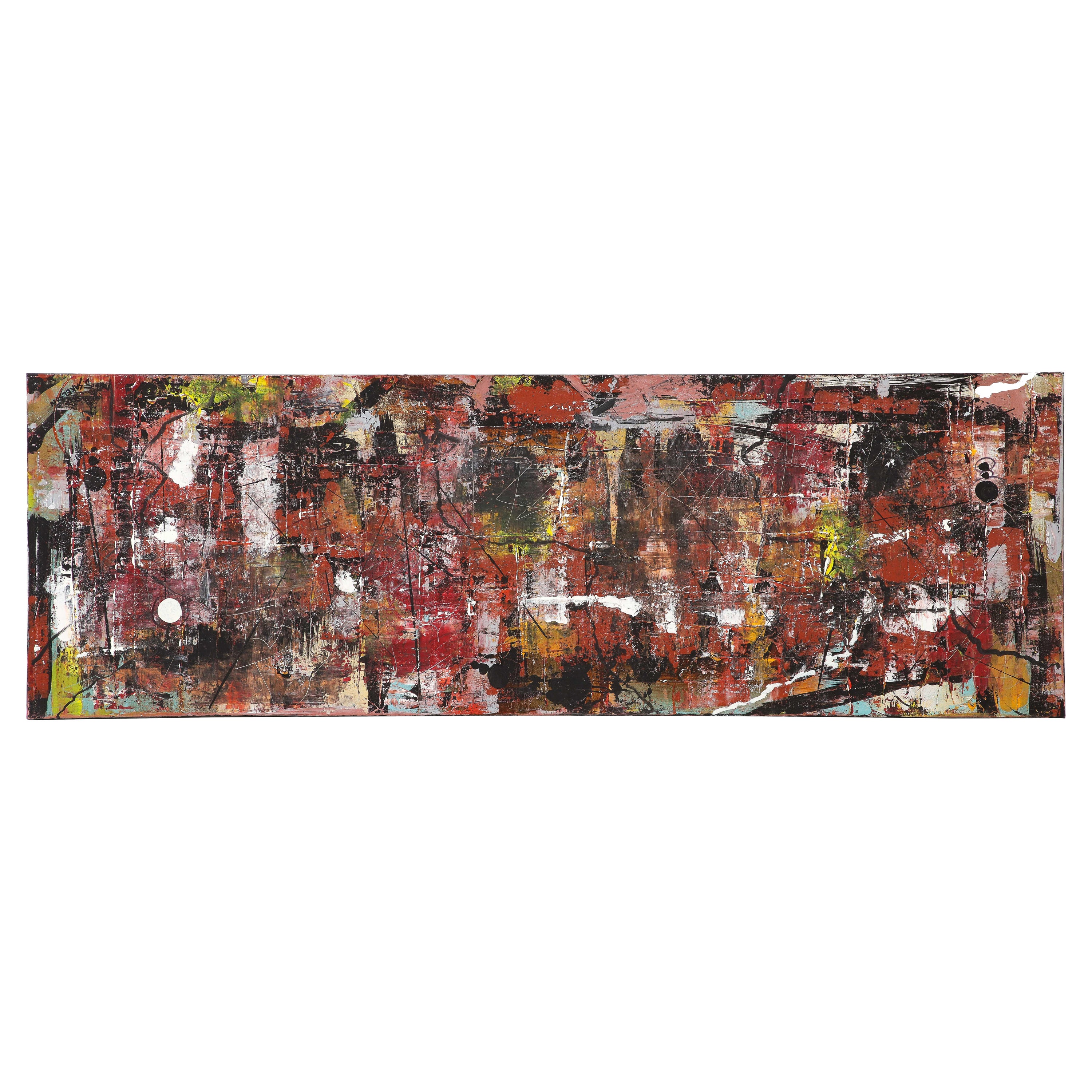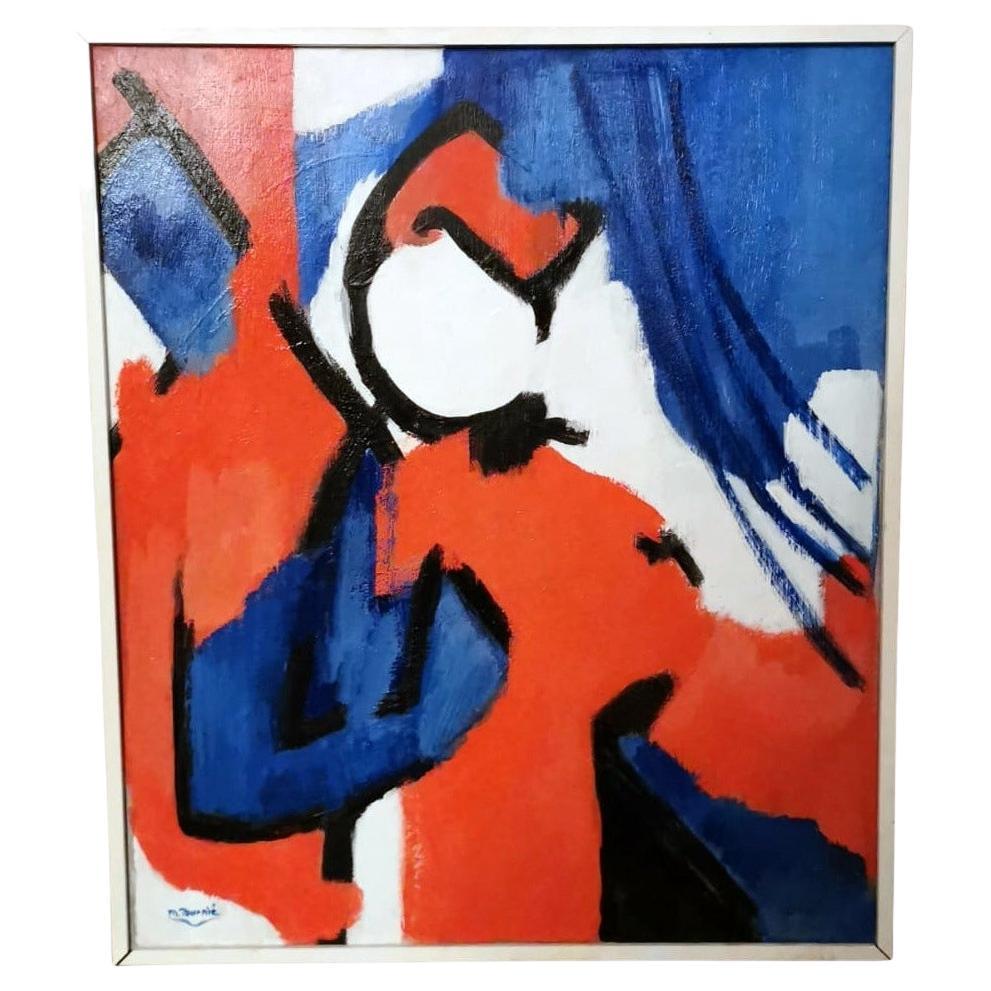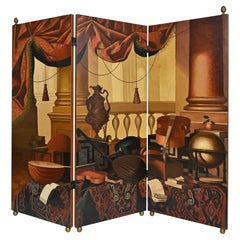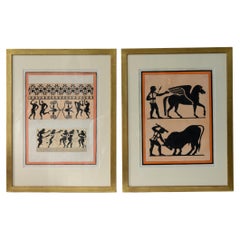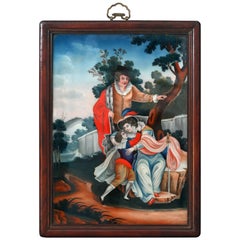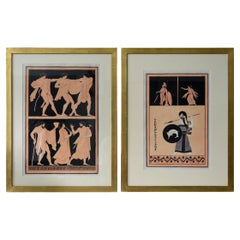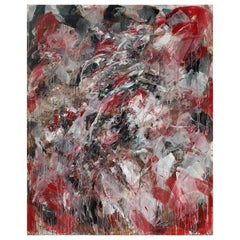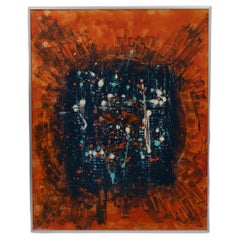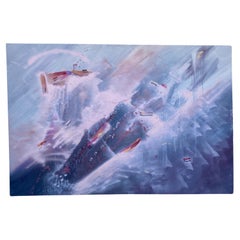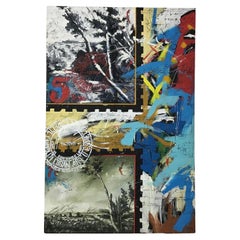Items Similar to Large Wall Painting "The Ways Of The Red October" October Revolution, Kandt, DDR
Want more images or videos?
Request additional images or videos from the seller
1 of 21
Large Wall Painting "The Ways Of The Red October" October Revolution, Kandt, DDR
$177,865.41
£133,673.15
€150,000
CA$249,091.61
A$273,176.90
CHF 141,486.42
MX$3,282,434.92
NOK 1,781,651.09
SEK 1,672,130.47
DKK 1,143,052.03
About the Item
Large wall painting "The Ways Of The Red October" October Revolution, Kandt, DDR
Manfred Kandt (1922-1992)
Oversized mural "Ways of Red October" created for the same named holiday residence in Zinnowitz of the Wismut AG (industrial company in the former DDR), 1976-1977. The picture is consisting of 21 painted wooden panels which can easily build up with an included plan.
Manfred Kandt succeeded in implementing this revolutionary world process artistically.
He achieves this by giving the mural three levels of information and reception. There is a level that summarizes the whole picture, in which the global impact and importance of the Great Socialist October Revolution is demonstrated in a large form and with bright red.
There is also a level with individual scenes of people which are taking part in the revolutionary events. The best view is optimally accessible at a medium distance. Parts of the picture and the appear to be compositely merged, faces of well-known revolutionaries can be discovered in the stream of Red October (with, among others, Abraham Lincoln, Lenin, Stalin, Rosa Luxemburg and Karl Liebknecht, various freedom fighters ...)
Pictures of him are in museums in Weimar, Rostock and Eisenach, German Historical Museum Berlin, important murals are built into industrial buildings in Lublin, Greifswald etc.
We are pleased to give you more information.
If necessary we are pleased to help you by the installation of the mural.
- Dimensions:Height: 124.02 in (315 cm)Width: 304.73 in (774 cm)Depth: 0.79 in (2 cm)
- Style:Modern (Of the Period)
- Materials and Techniques:
- Place of Origin:
- Period:
- Date of Manufacture:1976-1977
- Condition:Wear consistent with age and use.
- Seller Location:Epfach, DE
- Reference Number:1stDibs: LU5243218914702
About the Seller
4.9
Vetted Professional Seller
Every seller passes strict standards for authenticity and reliability
Established in 1986
1stDibs seller since 2020
60 sales on 1stDibs
Typical response time: 5 hours
- ShippingRetrieving quote...Shipping from: Epfach, Germany
- Return Policy
Authenticity Guarantee
In the unlikely event there’s an issue with an item’s authenticity, contact us within 1 year for a full refund. DetailsMoney-Back Guarantee
If your item is not as described, is damaged in transit, or does not arrive, contact us within 7 days for a full refund. Details24-Hour Cancellation
You have a 24-hour grace period in which to reconsider your purchase, with no questions asked.Vetted Professional Sellers
Our world-class sellers must adhere to strict standards for service and quality, maintaining the integrity of our listings.Price-Match Guarantee
If you find that a seller listed the same item for a lower price elsewhere, we’ll match it.Trusted Global Delivery
Our best-in-class carrier network provides specialized shipping options worldwide, including custom delivery.More From This Seller
View All20th Century Painted Screen Italy Musical Instruments Carpets
Located in Epfach, DE
Very decorative screen painted with musical instruments,
consisting of three folding panels of 72.5 cm, the screen stands on brass ball feet, the ends form pine cones also made of br...
Category
Vintage 1980s Italian Paintings and Screens
Materials
Wood
18th Century Italian Engraver Outline Etching Etruscian Italy
Located in Epfach, DE
2nd Half of the 18th cenutury, hand-colored
The pictures are showing dance scenes based on Etrukian vase painting.
Category
Antique Mid-18th Century Italian Paintings
Materials
Glass, Wood
19th Century Reversed Glass Painting China for European Market Verre Eglomisé
Located in Epfach, DE
The reversed glass painting has been made circa 1800. The picture has beautiful colors and is in the original condition. The beautiful painting is also in the original frame.
Category
Antique Early 19th Century Chinese Paintings
Materials
Art Glass
18th Century Italian Engraver Outline Etching Etruscian, Italy
Located in Epfach, DE
2.nd Half of the 18th cenutury, hand-colored
The pictures are showing dance scenes based on Etrukian vase painting.
Category
Antique Mid-18th Century Italian Paintings
Materials
Wood
Still Life of an Kitchen Interieur German 18..Jhdt. Oil on Canvas
Located in Epfach, DE
Still Life of an Kitchen Interieur , German , 18th century,
Oil on canvas.
Category
Antique 1740s German Baroque Paintings
Materials
Canvas
17th Picture Frame, Flame Strip Frame Netherlands Around 1650 Old Master Frame
Located in Epfach, DE
besonders schöner und originaler Flammleistenrahemn aus dem 17.Jhdt, Niederlande für Altmeistergemälde
Feine ausgearbeitete Leiste in hoher Qualität
Particularly beautiful flame...
Category
Antique Mid-17th Century Dutch Decorative Art
Materials
Wood
You May Also Like
Monumental French Vintage Abstract Oil Painting by Dehais, 1985
By Dehais
Located in Miami, FL
Monumental French Vintage Abstract Oil Painting by Dehais, 1985
Offered is an over-scale abstract oil on canvas signed Dehais lower right and dated 1985. This large, colorful painti...
Category
Late 20th Century French Modern Paintings
Materials
Wood, Canvas
$1,500 Sale Price
72% Off
20th Century Belgian Painting By Rene Berdal
Located in High Point, NC
Ignite your senses with this mesmerizing 20th Century Belgian painting by Rene Berdal, a masterpiece that captures the fiery essence of urban complexity. Dominated by rich, warm hues...
Category
20th Century Belgian Paintings
Materials
Paint
Abstract Original Painting on Canvas 76 x 51 Architectural 1980s Provenance
Located in Palm Springs, CA
This very large, 76“ x 51“ painting came from a beautiful architectural significant 1981 estate in Mission Hills, San Diego. I am quite sure that the architect had something to do wi...
Category
Vintage 1980s American Modern Paintings
Materials
Canvas
Large Abstract Oil on Canvas Cuban Artist Signed
Located in Bradenton, FL
Large abstract oil on canvas painting. Beautiful bright vivid colors with an abstract design. Painted by a Cuban artist and Signed Cesar 0...
Category
Mid-20th Century Mid-Century Modern Paintings
Materials
Paint
Mid Century Modern Abstract Painting, Sakelson
By (after) Jackson Pollock
Located in New York, NY
Large Modernist , rectangular format exuberant abstract oil painting on canvas, Stretched on wood frame. Signed, D Sakelson.
Category
Mid-20th Century American Modern Paintings
Materials
Canvas, Paint
French Symbolic Expressionism Oil Painting Depicting French Revolution
Located in Prato, Tuscany
We kindly suggest that you read the entire description, as with it we try to give you detailed technical and historical information to ensure the authenticity of our objects. Painting oil painting on canvas is made with mixed technique brush and spatula; the author used traditional brushes for a first draft giving shape to the whole drawing with an expert, loose wrist play and with sure and decisive brushstrokes; the representation, in this case, is not a pure exercise of virtuosity, in fact, the author communicates us his intimate essence manifesting it through the language of colors, shapes, and composition. The artist finished his work with the technique of spatula painting, named after the protagonist's instrument, redistributing the colors densely and consistently, making the painting take on a special body and depth. The painting is signed but we are unable to give definite information about the author, however, we confirm its extraordinary aesthetic and engaging vividness; the painting was made in 1989 in the author's studio in Paris whose intentions were to celebrate the 200th anniversary of the French Revolution (1789). The painter was inspired by both French Expressionism and Symbolism; Expressionism exalts the emotional value of art; it is the artist's desire to communicate inner feelings, while with Symbolism, painters tend to go beyond the objective representation of reality to focus instead on the subjective vision, in which inner feelings, emotions, and experiences are evoked above all. Our painting is overflowing with the symbolism of the French Revolution; it is practically an evocative essence of it. This important and overwhelming historical event is powerfully present in the soul of the artist who wanted to overbearingly communicate to us his deepest emotions by transposing them entirely in the painting with strong and vivid colors, he did not want to simply allude or hint but to express, indeed "shout" his own deep interiority. In his intentions, the painting schematically and symbolically represents a standard-bearer of the French Revolution wearing the classic "Phrygian" hat. The author used only the three colors white, red, and blue that characterized the flags of the French Revolution; they were the new banners, which opposed the traditional emblem of the monarchy, the lilies on a white field. Three were the colors because three were the goals of the Revolution: liberty, equality, and fraternity, and they represented the three classes into which French society of the time was divided: the clergy (blue), the nobility (white), and the third state (red). The "Phrygian" cap (Latin for pileus) painted in red in the painting also has a high symbolic value, In Roman times it was worn by the " freedmen" to show that they were now freed slaves but in the French Revolution it became the very symbol of Liberty; a similar cap was worn by the freed Marseilles convicts in 1792, and was the symbol of the Jacobins during the French Revolution. Due to this fact, in addition to its historical meaning of freedom, it was later adopted as a symbol of the revolution itself, a symbol immortalized on the "Marianne," the very emblem of France, in Eugène Delacroix's famous painting "Liberty Leading the People...
Category
Late 20th Century French Modern Paintings
Materials
Canvas, Wood
More Ways To Browse
Ddr Furniture
Gary Janis
Grisaille Neoclassical
Hawaiian Glass
Jean Baptiste Pillement
Jesus And Mary Painting
John The Baptist Head
Lee Reynolds On Sale
Maria Astadjov
Miniature Brass Frames
Museum Gilt Frame
Myanmar Paintings
Oil Painting Serbia
Pagoda Painting
Painting Wall Lamp
Paintings Of Clipper Ships
Paul Delaroche
Piero Della Francesca

